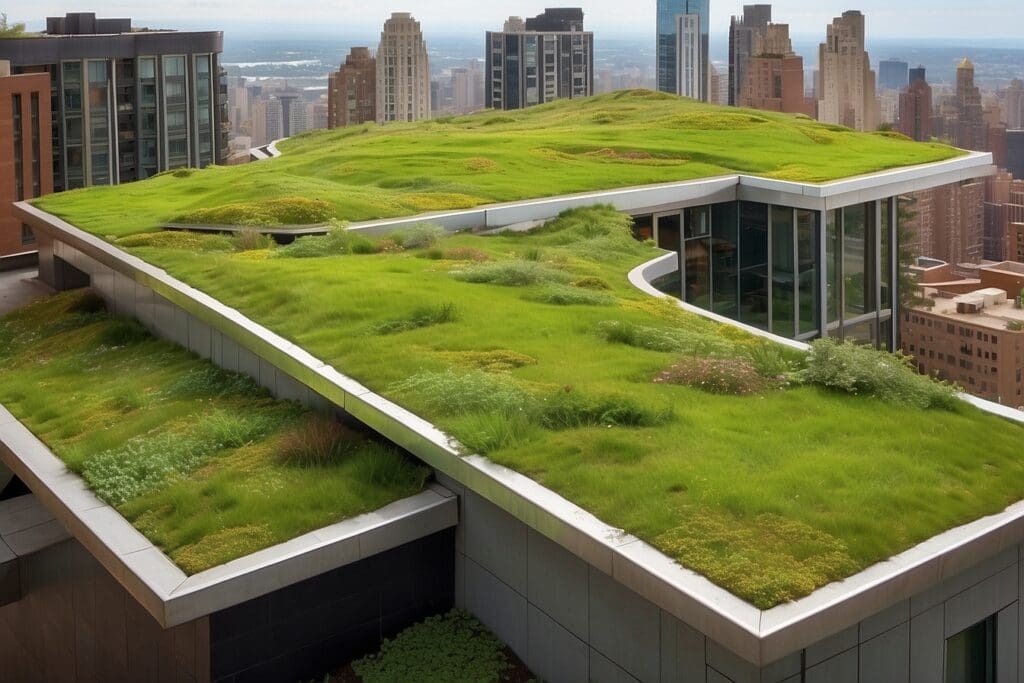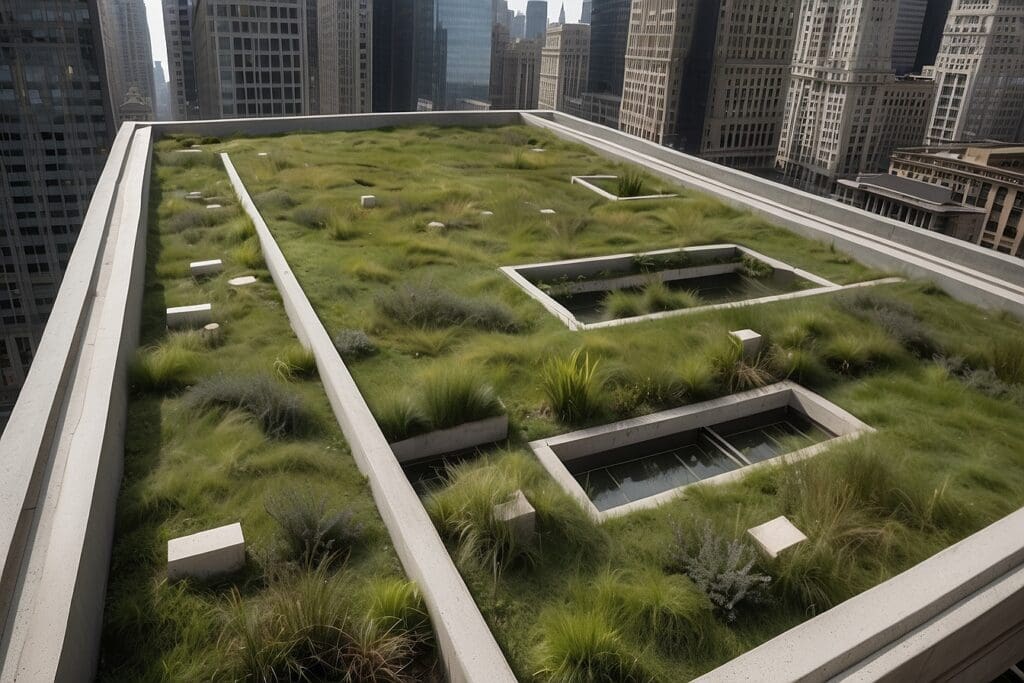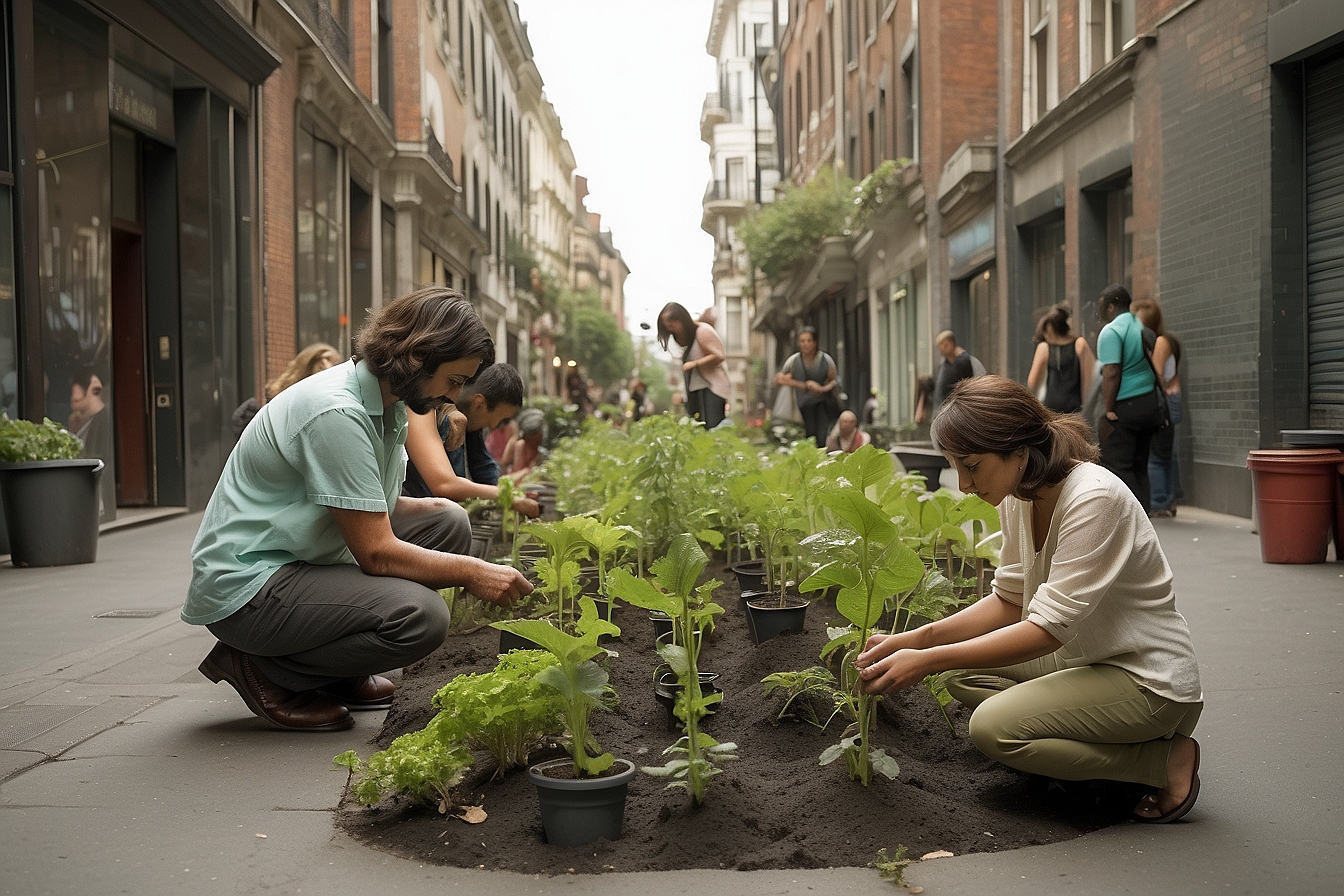From street level the Chicago City Hall looks like any other urban building: grey, rectangular, and concrete. From the roof, it is transformed into a magical garden amidst a towering jungle of steel and cement. In cities across the nation green roofs are transforming urban landscapes, lowering building energy needs, and combating rising urban temperatures.
So what exactly is a “green roof”? There are some varying definitions including painting black tar roofs white, installing renewable energy systems on rooftops or even just roofs built with sustainable materials. The aforementioned things are fantastic and all eco-friendly, but in this article “green roofs” refer to roofs that are actually covered (wholly or partially) in vegetation.

There are two types of vegetative green roofs, generally distinguished by the titles “intensive” and “extensive.” Essentially, intensive green roofs have more soil and often support large vegetation such as trees and big shrubs. Typically the less common of the two types of green roofs, intensive green roofs are usually heavier and can require more frequent maintenance and care. Extensive green roofs usually involve much smaller amounts of soil (often a depth of 2 to 4 inches) and correspondingly plants that have lower soil needs. Extensive green roofs are much lighter, usually require less maintenance, and have become common in Europe and now in many US cities. Extensive roofs are often made up of several layers to make sure that water drains properly and does not leak into the building. Even with the layers, extensive green roofs can be kept relatively light and can be accommodated on many buildings.
In addition to adding a much needed touch of greenery to urban settings, green roofs offer many other benefits. First off, green roofs are more durable and can last up to twice as long as conventional roofs. The vegetation and soil decreases weathering and protects the actual roof material from corrosion, increasing the life of the materials. Green roofs also make sense from an energy efficiency perspective. Acting as an insulator, heat is kept in during the winter, and like wise these roofs are significantly cooler in the summer. Additionally, because green roofs can actually absorb and utilize rain water, they can drastically reduce storm-water runoff. In the case of increased rainfall, sometimes city sewers can become flooded and untreated runoff can go directly into nearby water sheds.

Besides all of the previously listed merits, one of the main reasons that green roofs are so popular in cities has to do with something called the “urban heat island effect” or UHIE. Basically, urban areas are, on a whole, much warmer than areas that contain more vegetation. Plants use a process called “evapotranspiration” to cool themselves, during which they evaporate water from their leaves and subsequently cool the air. In cities, where there are fewer plants, there is less evapotranspiration and warmer temperatures. The lack of vegetation is coupled with an overabundance of concrete and asphalt, materials which absorband trap heat, dramatically increasing urban temperatures and causing a real problem for many city residents.
Green roofs are just beginning to catch on in the United States. In Europe, they have been popular for some time and in many places are substantially assisted by government support. Because it is a significant capital investment to convert a conventional roof to a green roof, government support and encouragement may be key to the continued growth of green roofs in the United States. Many cities have already begun to offer financial incentives to businesses and individuals installing green roofs. The City of Chicago, for example, offered several $5000 grants to businesses and individuals proposing new green roof projects and installed several green roofs on City buildings to serve as examples.
While green roofs have been more popular with large commercial buildings, they are also a viable option for residential homeowners. More research is being done to examine the best technologies for residential roofs to encourage further development in this area. The Green Roof Project (http://www.hadj.net/green-roofs/project-info.html) is doing research in this area and has several interesting resources for homeowners interested in learning more about residential green roofs. If you’re interested in pursuing green roofs further, here are some links to get you started:
http://www.greengridroofs.com/
http://www.lid-stormwater.net/greenroofs_home.htm
http://www.toolbase.org/Technology-Inventory/Roofs/green-roofs





